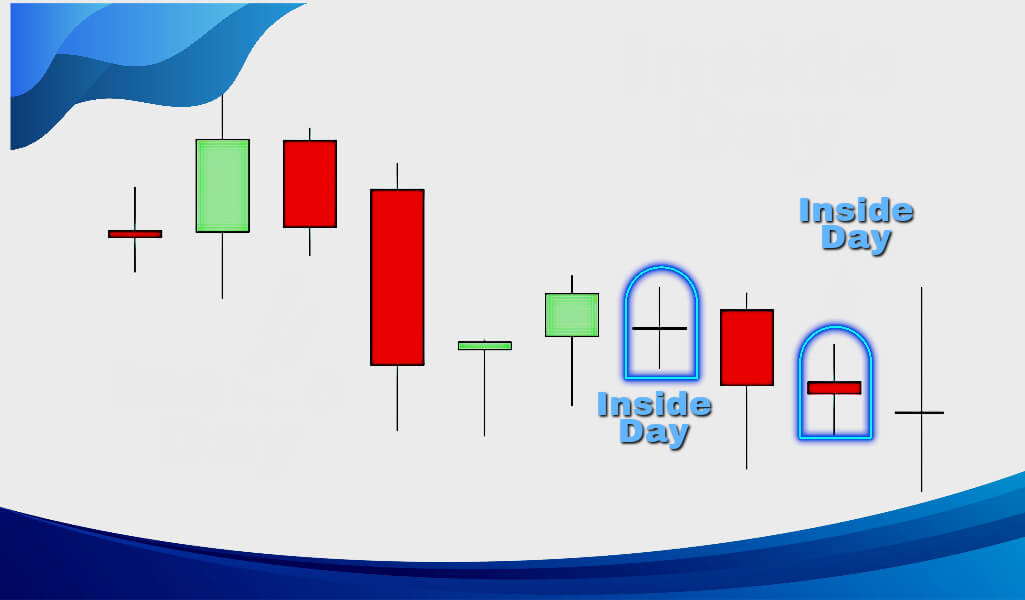
The Inside Day Candle: A Guide to Harnessing Its Power
Welcome to our guide, “Illuminating the Inside Day Candle,” where we explore key tools in day trading strategies. This guide focuses on the inside day candlestick pattern, a bar pattern that reveals much about short-term price action on the daily chart. Traders often seek to understand day patterns, and the inside day chart pattern offers a wealth of information. We’ll help you understand it and use it to better navigate the markets.
The Inside Day Candle – Key Takeaways
- An inside day occurs when a daily candle’s size matches that of the previous day, signaling an impending market movement.
- The inside day pattern alone doesn’t indicate the market’s direction. To effectively trade inside days, it’s crucial to use additional tools for two main reasons: determining the direction of the potential move and establishing an exit point.
- There are three main strategies for trading inside days: combining an Inside Day (ID) with Chaikin Oscillator and Stochastic RSI (SRSI), pairing ID with SMI Ergodic, and using ID with Parabolic SAR (PSAR) and Relative Vigor Index (RVI).
- It presents a clean, uncluttered look on charts, making it straightforward and easy to implement for traders.
What Are Inside Days?
An inside day occurs when the entire price range of a candlestick falls within the range of the previous trading day. This candle pattern, important in Japanese candlestick analysis, often hints at a market pause or possible direction change. The importance of an inside day becomes clearer when you see how its opening and closing prices relate to its highest and lowest points.
Technical analysis of this pattern can greatly inform your trading decisions. Analyzing the closing price against the previous day’s open and close helps traders understand market trends and possible movements. The inside day pattern tells us about market trends and how to use this information in trading strategies, including using stop loss for risk management.
Understanding Inside Day Candle

Candlesticks are a popular method to visualize the intraday trading over a certain period. There is a vertical line marking highs and lows. The ticker body means the asset’s open and closing for that day. An inside day pattern takes place once the candle of one trading day’s lows and highs goes below the limits of the prior days’ lows and highs.
Inside day pattern suggests an indecisive trend in the market. It shows lack of price movement compared to previous trading days.
But, if you spot several inside days at one, the chances are higher that the asset will break out of a trading range.
And you cannot determine how it will break based only on inside days. Intraday are the best indicators if you combine them with other technical analysis tools.
Generally, traders find an intraday chart pattern useful as it indicates the asset’s potential movement up or down. The implementation of other analytics can give enough confidence to place a bet on a potential pending move in the security price.
Examples of Inside Days Patterns
Let’s imagine you’re looking at the daily chart of a fictional stock, “XYZ Corp.” Chart shows a series of Japanese candlesticks representing the price action for each day. An “inside day” occurs when the entire high-to-low range of a day’s candlestick is within the range of the previous day’s candlestick.
In a multiple inside days pattern, you would observe that the range of each day’s candlestick fully contains itself within the range of the preceding day. For example:
Day 1: The candlestick has a certain high and low range.
Day 2: This day’s candlestick is entirely within Day 1’s range. Its high is lower than Day 1’s high, and its low is higher than Day 1’s low.
Day 3: The pattern continues, with Day 3’s candlestick range entirely within Day 2’s.
This pattern indicates a period of consolidation, where the price is compressing and potentially gearing up for a significant move either upward or downward. The direction of the breakout is uncertain, but the pattern suggests that a strong move could be imminent.
Inside Day Trading Strategies

One effective strategy is the combination of the ID candle pattern with the Chaikin oscillator and Stochastic RSI (SRSI). The Stochastic helps identify overbought and oversold conditions, while the Chaikin oscillator detects bullish and bearish divergences and signals when to exit positions – particularly when the Chaikin line crosses zero.
Another strategy pairs the ID pattern with the SMI Ergodic, similar to the MACD but quicker and more volatile. This strategy focuses on matching inside day patterns with bullish or bearish Ergodic signals.
Lastly, combining the ID candle with the Parabolic SAR and Relative Vigor Index (RVI) forms another strategy. This approach uses inside day signals and RVI crossovers to determine trade direction, with the PSAR confirming the trend and providing an exit point.
Bottom Line – The Inside Day Candle
The inside day candle pattern, with its simplicity and depth, stands as a testament to the enduring value of Japanese candlestick analysis in modern trading. For traders looking to refine their strategies and enhance their market analysis, mastering the inside day candle pattern and its associated strategies is an essential step towards achieving greater trading proficiency and success.




